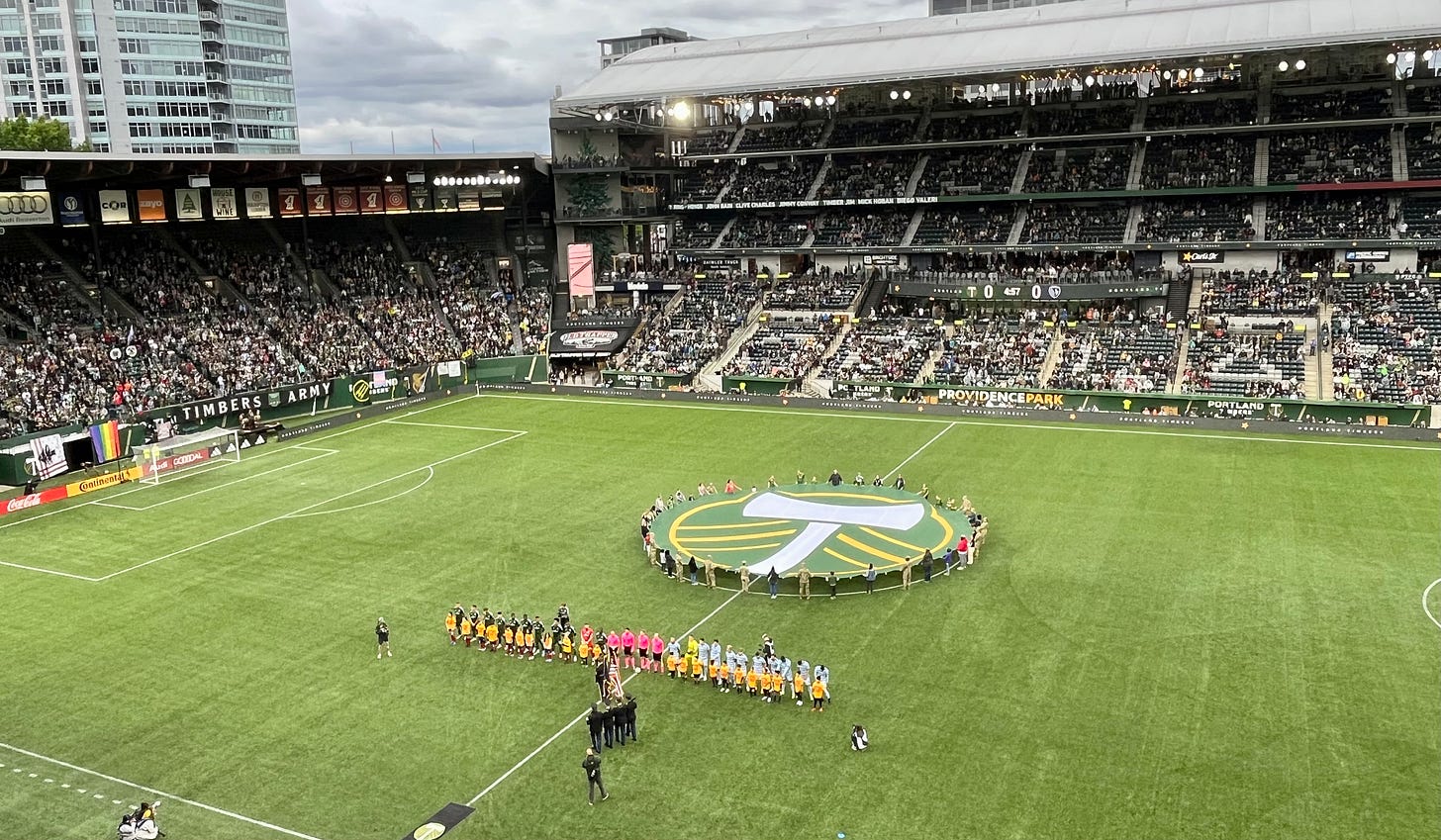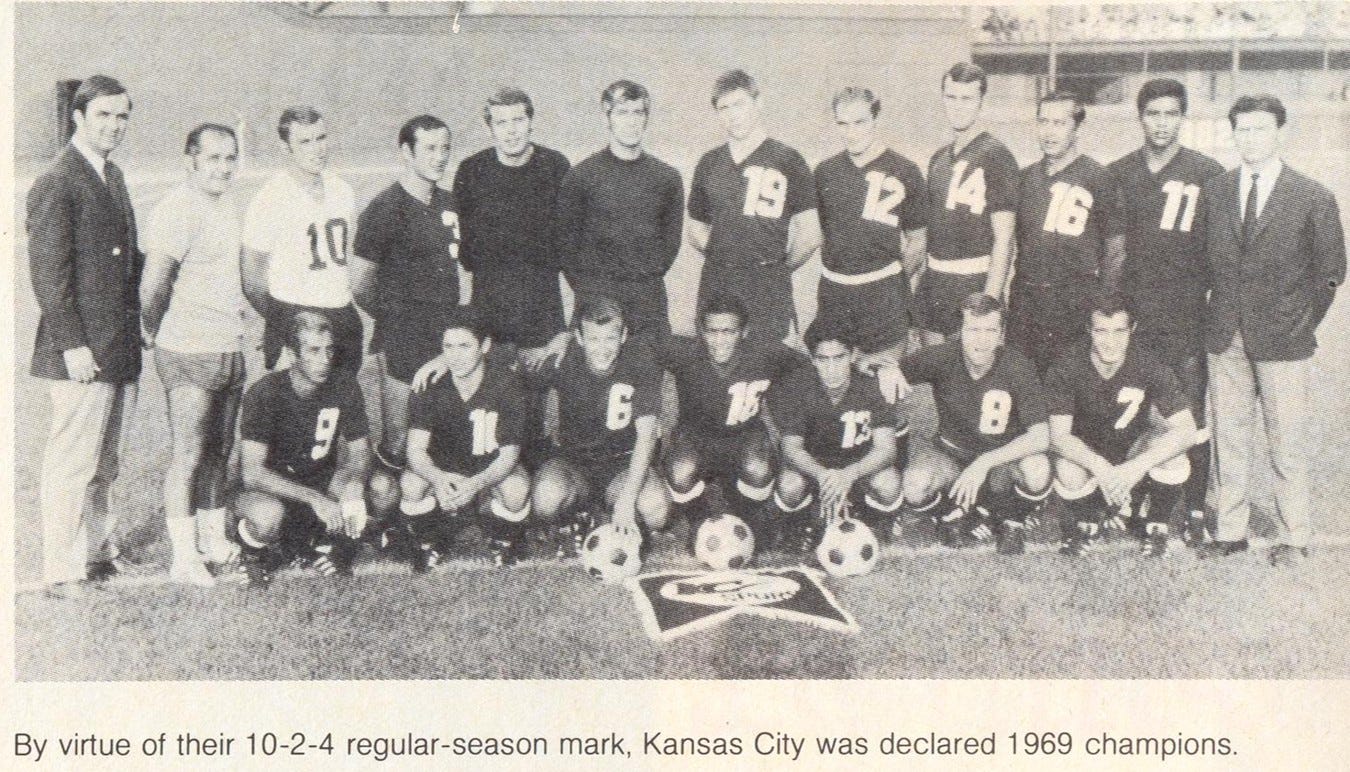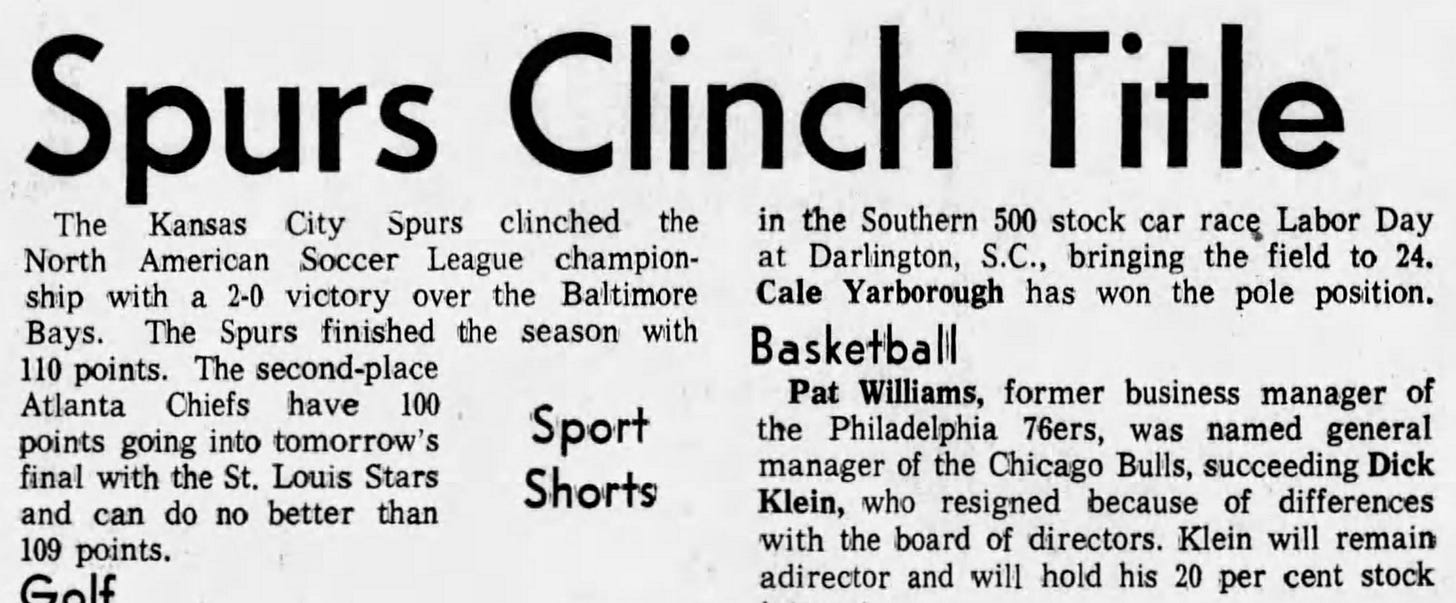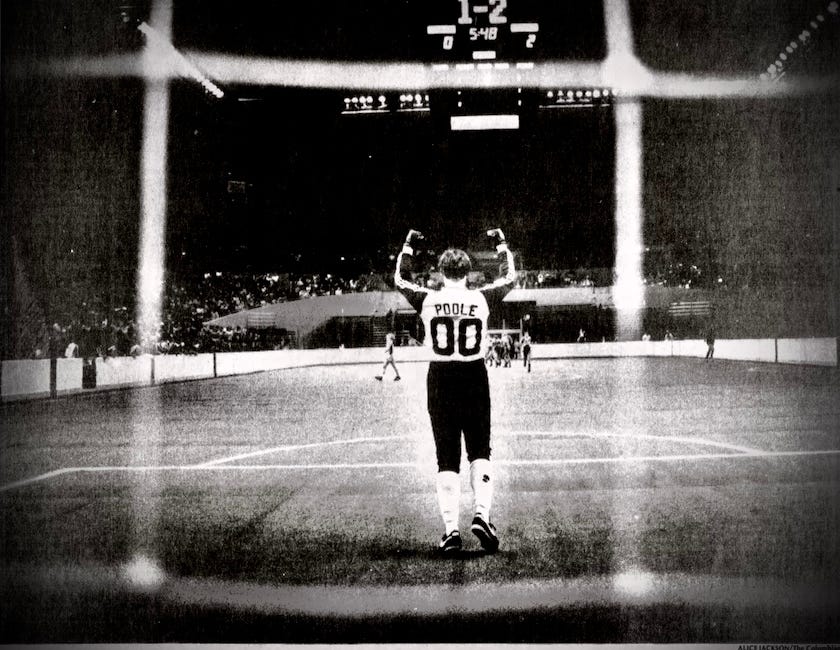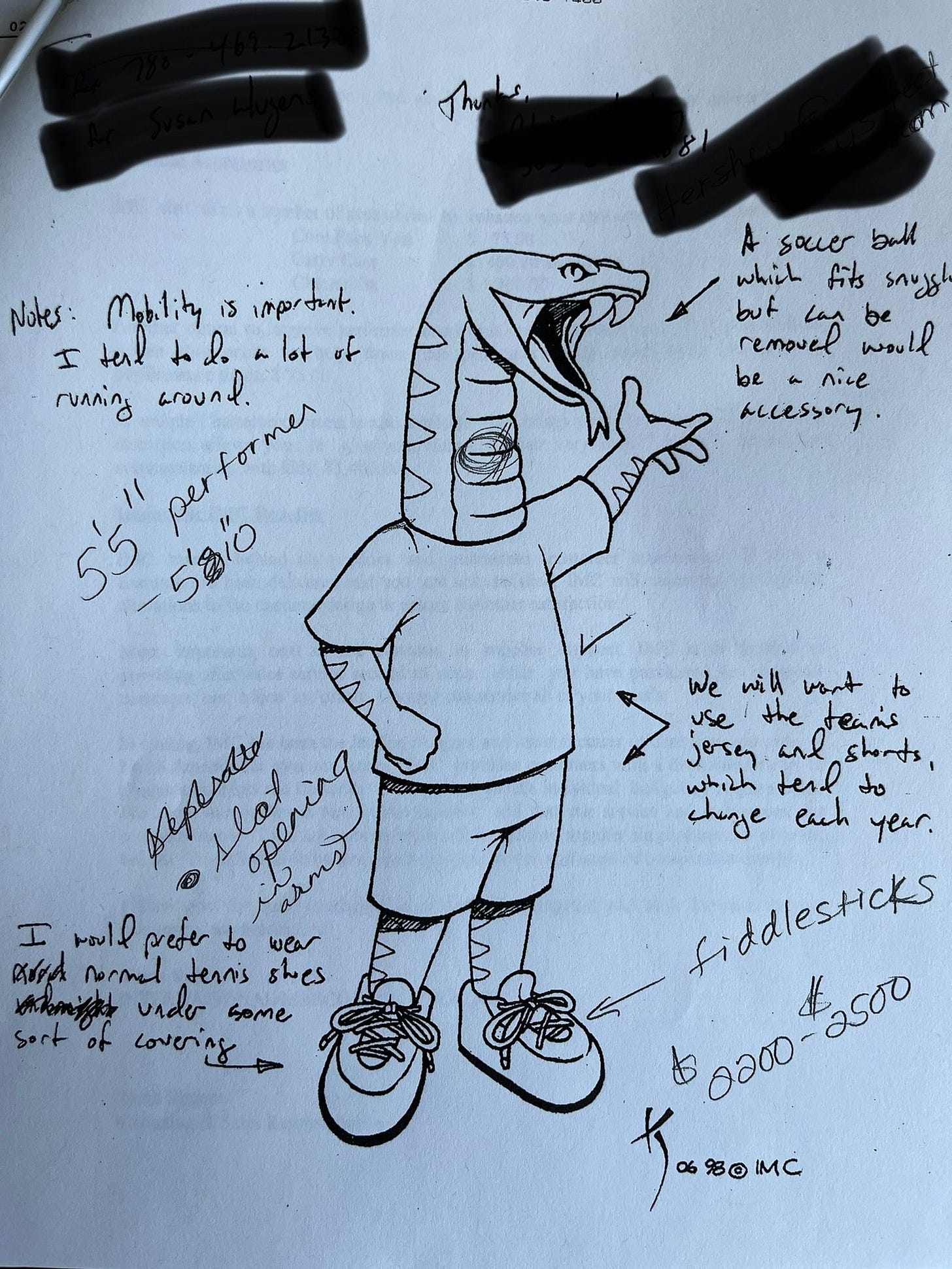We’re here, and we’re going to live tweet/X this game. If you have Twitter/X, follow us at @greenitcolor. We’ll see what we can do in a thread there as we cover this game and some history—like what the 1996 Kansas City MLS side has in common with Seinfeld.
Worst-case scenario, you find out who our next podcast interview will be AND you’ll get to visit the magic of the 35-yard shootout.
If you don’t have Twitter/X, no problem: we’ll update this story here with all of those.
Starting lineups:
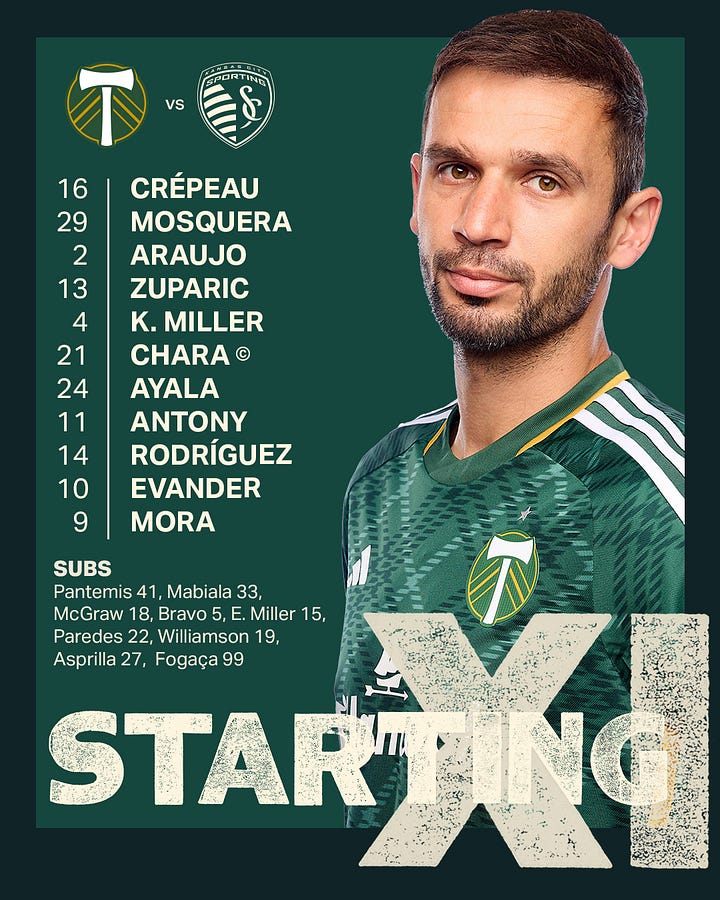
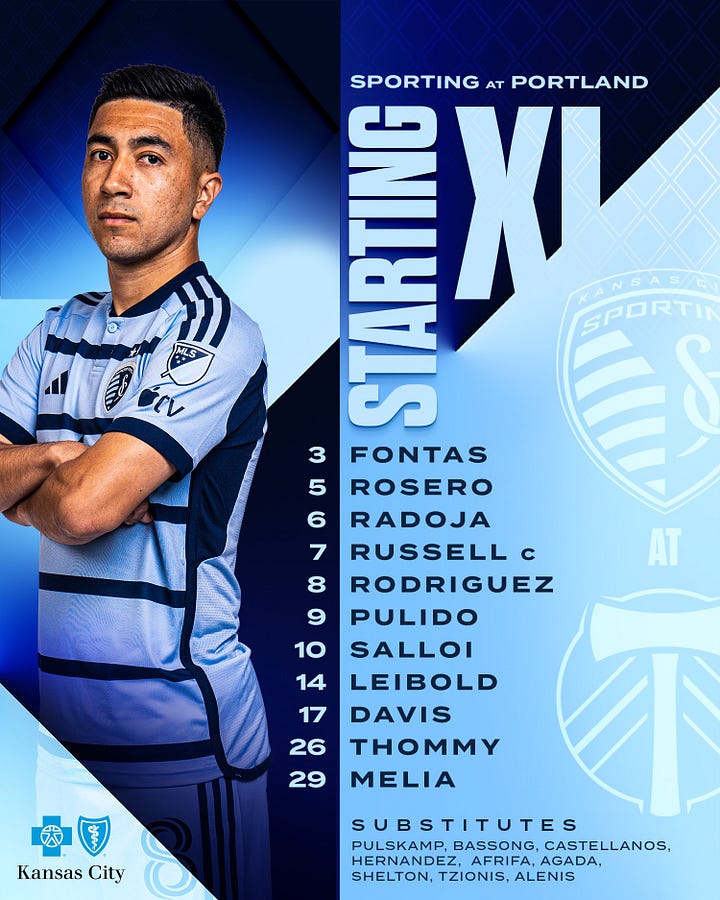
29’ | 0 - 0
Soccer in Kansas City goes back (even before) the first NASL season in 1968, when the Kansas City Spurs were among the 17 teams in the league. [Like the 2024 Timbers (Župarić), the '68 Spurs featured a former Rijeka player (the apparently then-”Single” Vranković).]
35’ | 0 - 0
In 1969, the second-year NASL contracted to 5 teams, the Kansas City Spurs among them.
Halftime | 0 - 0
To make things interesting, the 1969 NASL had the first part of the season played as a double round robin, with the five NASL teams represented by teams from England and Scotland.
Note from the above: Clyde Best scored in that first 1969 “NASL” game, as a member of Baltimore/West Ham.
Last year, Best was honored here in Portland where a mural on the Providence Park concourse was unveiled (artist: https://www.instagram.com/hernamewaskyra/?hl=en):
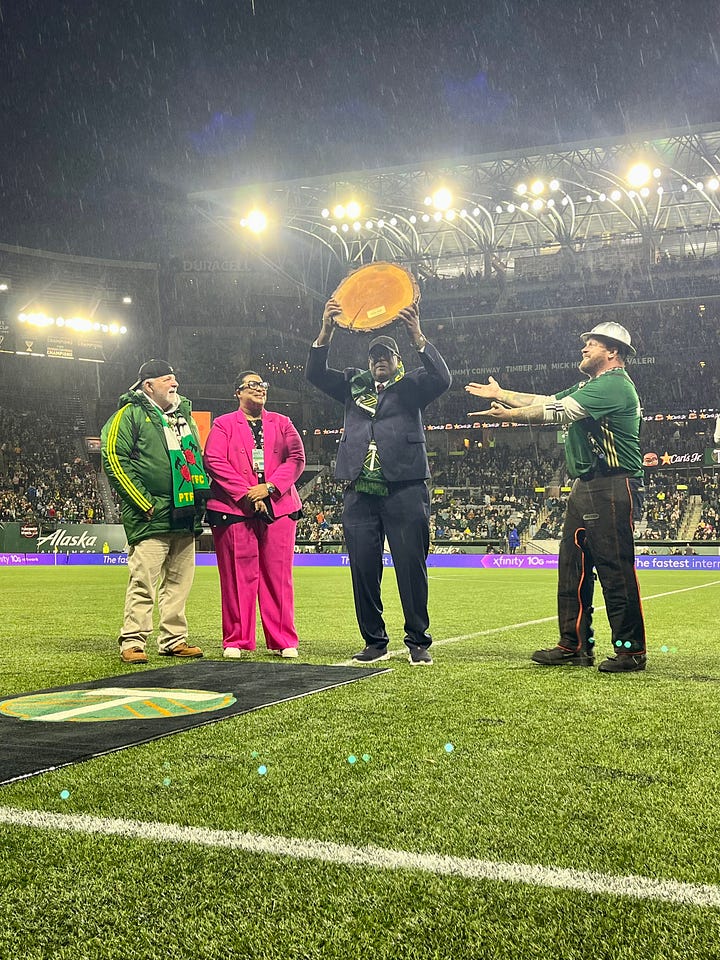
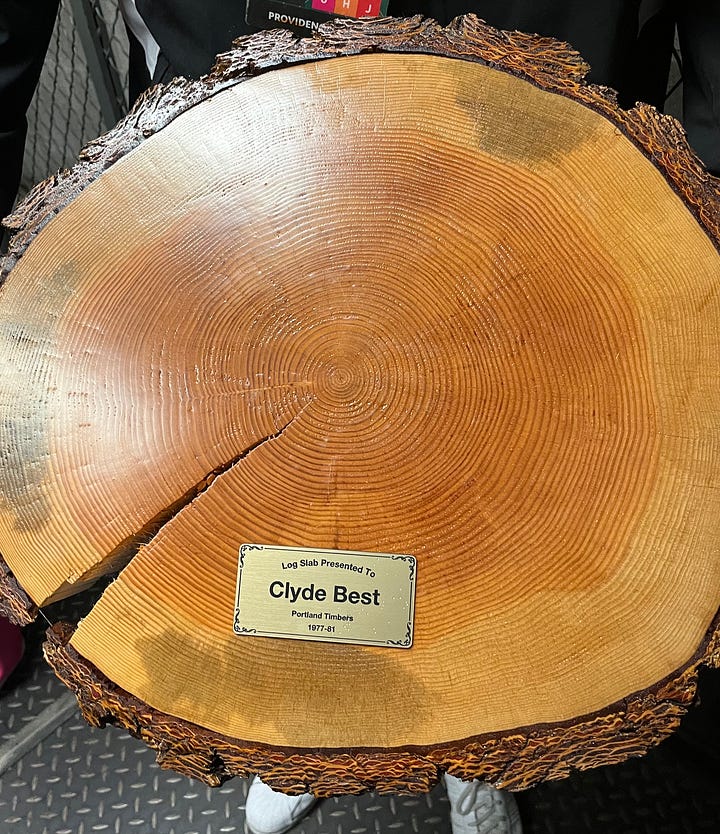
And tonight, in Tampa Bay, the Rowdies are doing the same:

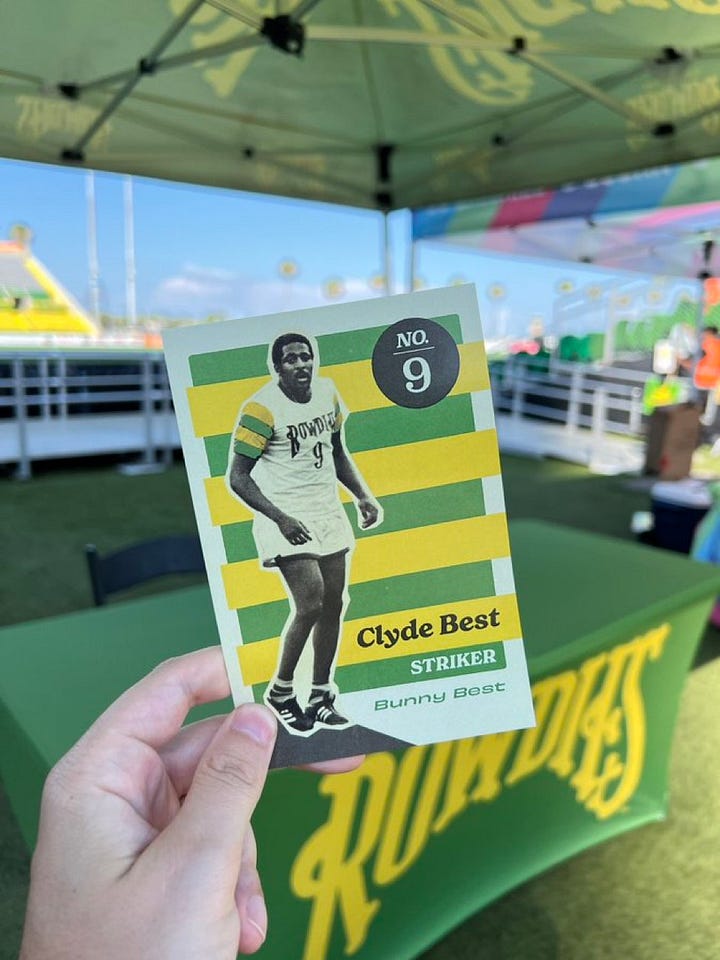
In the 1969 first-part-of-the-season tournament of not-exactly-NASL teams representing the then full table of 5 NASL franchises, the following teams took part: Aston Villa (Atlanta), West Ham (Baltimore), Dundee (Dallas), Wolverhampton (Kansas City), Kilmarnock (St. Louis). Wolverhampton/KC came out on top. And the proper Spurs (who were no longer Wolverhampton) played the rest of the season and won the 1969 NASL clinching it in a 2-0 victory over the Bays (who were no longer West Ham).
52’ | 1 - 0 Timbers GOAL!
Felipe Mora from Evander
Fast forward to 1996, and Kansas City has a team in the inaugural MLS season: Kansas City Wiz.
59' | 1 - 0
That name, however, lasts only one year, as the team becomes the Wizards in 1997, in response to threatened legal action from a New York electronics store (click picture to go to article):
62' | 1 - 0
Seinfeld seemed undeterred and unafraid of looking The Wiz in the eye(s).
Seinfeld > Kansas City soccer franchises:
62' | 1 - 1
Then again, maybe not: Wiz revenge, Goal Rodriguez.
This match is tied. If this were 1996 MLS, that would mean going to 35-yard shootout. Kansas City's current coach, Peter Vermes, was in a memorable one with former interim Timbers coach Miles Joseph when the two played for the MetroStars:
3 Interesting Things from this shootout:
Notice Jeff Agoos doing what Roberto Carlos of the Cosmos did in the NASL days.
I interviewed him about it for an article in Howler: From the shooter’s perspective, Agoos described his style (putting the ball into the air) as this: “I definitely took it from the old NASL [from watching Carlos Alberto]. I remember going to see games and seeing that being done, and saw how skillful that was. When I first took the shootouts, I didn’t start that way. I started off on the ground. I just felt like by starting on the ground I give the advantage to the goalkeeper because there’s just one opportunity, which is to place the ball or beat the goalkeeper.
Agoos’s explanation of his style illuminates how it’s possible to then make split-second decisions in the moment. “If I lift the ball,” Agoos said, “I’ve now made the goalkeeper make an instant decision as to what his next choice is, and, based on what his choice is, would then predicate what my next decision was going to be. It was sort of a decision tree.”
“If I lifted the ball, and I knew the goalkeeper is coming out, I’d continue to lift the ball again and have an opportunity to chip the goalkeeper. If the goalkeeper stayed on his line, I would then be able to put the ball on the ground and have a wider goal to shoot at. What I tried to do was leverage the decision so I would have the best possible opportunity to score a goal.”
All of this took place, keep in mind, in five seconds. But to Agoos, it was the best process because “it forces the goalkeeper to make a choice, which would then make it easier for me to determine which direction I was going to go.”
In the same essay, from current Sporting KC coach Peter Vermes:
Before Vermes started, he turned to referee Esse Baharmast and said, “Esse, if I shoot, we win.” Such audacity for a player having a hard time walking, after a full 105 minutes of soccer on the Giants Stadium turf and with a torn muscle. Vermes took two touches and then slightly chipped the ball over DC United goalkeeper Jeff Causey. Vermes knew Causey was aggressive and “wanted to knick the ball over, play more on his aggressiveness than anything.” The ball went in, Vermes hopped off, and the MetroStars claimed Game 1 of the Eastern Conference Semifinals.
Truth be told, Vermes meant to confirm, “If I score, it’s over,” in a manner more of a question, trying to calibrate what was needed in the moment. But what he said was picked up by ESPN microphones and, paired with the chipped finish and hobbling skips off the field, a better drama, something the fans could immediately take home with them.
Last year, Timbers’ interim head coach Miles Joseph described his technique (which is on display in the above clip) this way:
74' | 1 - 1
Back to the teams currently playing here. When Kansas City (this time as the Wizards) won their first MLS Cup in 2000, current KC coach Peter Vermes was a player on the team, as was Portland native and Timber Chris Brown (center, left of the trophy):
Chris talks about his soccer story in Green Is the Color Podcast Episode 22:
There is a VAR check on the field for a Timbers goal at the North End. I think we all remember that end and these two teams:
That shootout features now Timbers’ assistant coach Liam Ridgewell’s first competitive penalty kick. Though we both missed that Valeri took the first shot in the shootout, Ridgewell recalls the moment:
VAR complete…GOAL Timbers!
79’ | 2 - 1 Evander!
90’ | 2 - 1
8 minutes of added time coming (mostly from the VAR above).
Bite your nails, sit tight
In 35-yard shootouts in the 78-79 seasons, Poole posted 7 wins in 9 matches. Poole (and indoor soccer in Portland) is also featured in a previous Match Day*
Timbers vs Los Angeles Aztecs (Indoors):
This Match Day* post takes Green Is the Color to the wonderful world of indoor soccer, in a mostly-visual exploration of the first-ever home Timbers indoor soccer match—and a timely chance to say, Happy Birthday, Portland Pride (RIP)! On November 16, 1980, the Portland Timbers played their first-ever home indoor…
96’ | 2 -1
Also mentioned in the above Match Day* is Jim Gorsek, who played for the NASL Timbers indoor and out and was also the first signed player for the indoor Portland Pride in 1993, where he wore the number 25, something later honored in the Portland Pride logo, on Louie the Lion’s shirt:
97’ | 2 - 1
While we’re talking indoor soccer in Portland, may as well tell you that Tuesday’s podcast guest has indoor ties to both Louie the Lion and Stryker Python, of the 1998-1999 Portland Pythons:
Final | 2 - 1
Timbers Win!
Enjoy the highlights and come back Tuesday for Podcast Episode 30: Chris Hershey!
#RCTID



